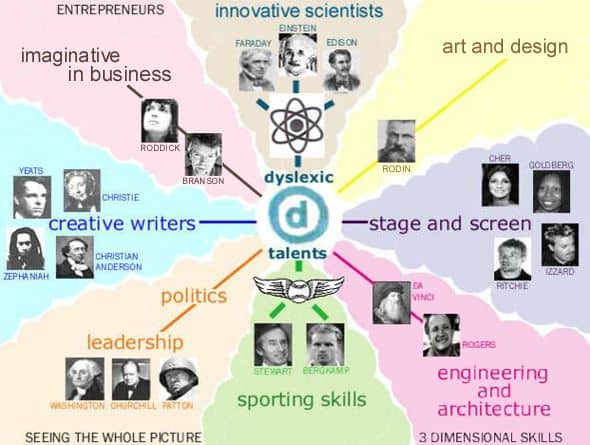At Bayhill, we often blog about the school happenings or our outstanding staff & students. We also like to share important information about how students with learning differences such as dyslexia think and experience the world. A couple of times a month I read blog posts and studies on the website Madebydyslexia.org. The organization’s mission is to educate the world about the important role of dyslexic thinkers in education, the arts and industry. Most recently I read a blog titled: Spotting the Strengths Made by Dyslexia. The article explained how dyslexics view the world and approach problem solving. Dyslexics learn best when they can use the strengths of their unique and creative minds.
Dyslexics Think Outside the Box
In the article Kate Griggs sums up dyslexic thinkers as “game-changers, industry disruptors.” They tend to ask “What if?” and “Why not?” Their brains want to wrap themselves in exploration and problem solving. This is why so many dyslexics are visual and hands-on learners. They are not “in the box” thinkers. This is why they tend to do poorly on tests in school. Yet, give them a creative project in which they can delve deeply into an area of interest and they can produce unique and thoughtful representations. Whether it be designing a machine, writing a song, or creating a unique ad campaign, dyslexics demonstrate understanding in creative ways.
Dyslexic Thinkers at Bayhill
Just this morning I had an opportunity to watch one of our students give a presentation on a film he watched for history class. I was blown away by the unique and creative graphics. More so, I watched as he gave a spot on impersonation of Robin Williams in Good Morning Vietnam. That student struggles with tests, spelling, and getting his thoughts down on paper. When he is allowed to show off his creative skills, on the other hand, he can engage an entire class on why they too should watch the film. The student demonstrated the importance of letting dyslexic students learn outside the box.
The Made by Dyslexia article details the six areas of dyslexic thinking so clearly demonstrated by the student in history class – moving, making & inventing, creating, interpreting, explaining, and story-telling. Read the article and learn about Dyslexic Thinking. You can also take a quiz to see if you think like a dyslexic.
By
Donna Austin


